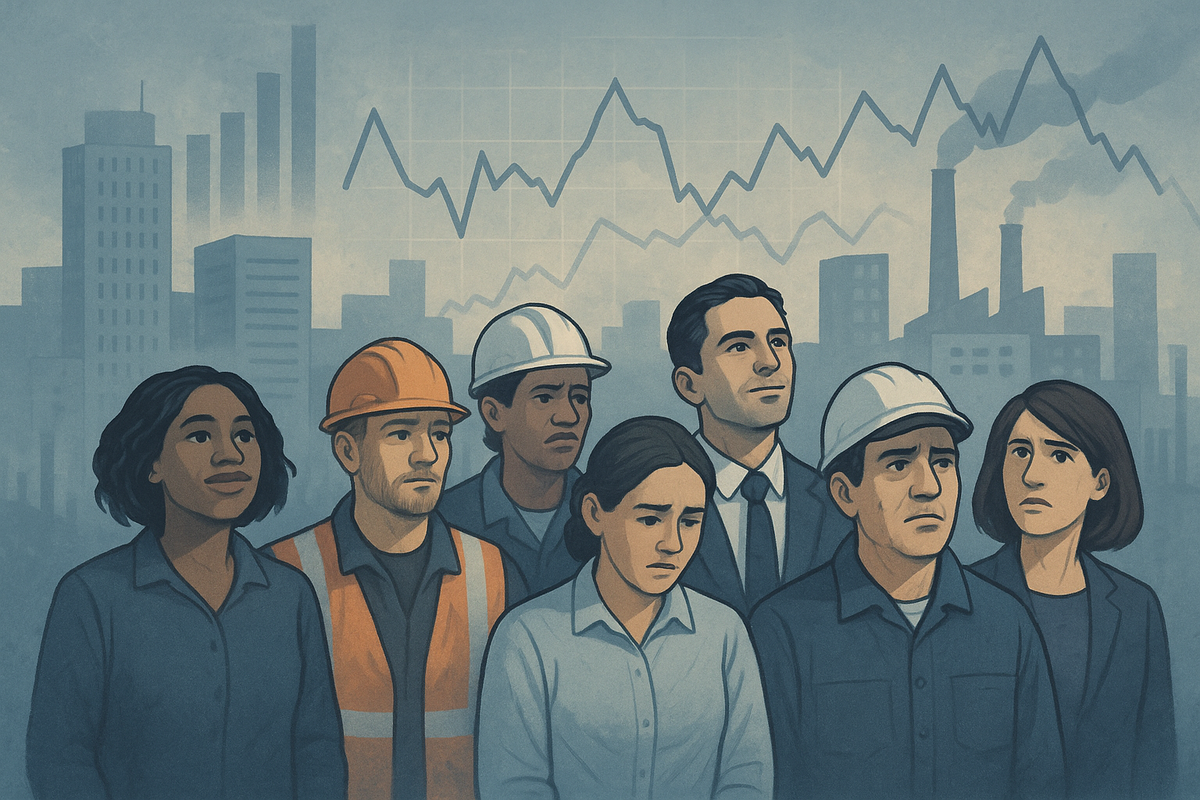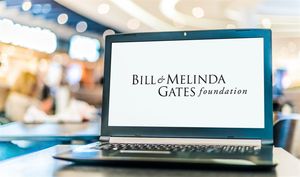Financial News
U.S. Labor Market Shows Mixed Signals: Unemployment Claims Tick Up, Job Growth Slows

Recent economic data from the United States has presented a nuanced picture of the nation's labor market, with a slight uptick in unemployment benefit applications alongside a significantly lower-than-expected nonfarm jobs report. While the increase in jobless claims remains within its recent range and is not immediately indicative of a recession, the addition of only 73,000 nonfarm jobs, falling well short of expectations and accompanied by sharp downward revisions to prior months, suggests a notable deceleration in job creation. These mixed signals are prompting economists and investors to reassess the strength of the U.S. economy and the potential trajectory of monetary policy.
A Shifting Landscape: What Happened and Why It Matters
The latest figures reveal a labor market that, while still relatively robust, is showing clear signs of cooling. Initial applications for U.S. unemployment benefits saw a modest increase last week, though the overall number remains consistent with a healthy job market. More significantly, the nonfarm payrolls report delivered a jolt, indicating that the economy added a mere 73,000 jobs in the most recent period. This figure not only missed consensus estimates by a considerable margin but was compounded by substantial downward revisions to job growth in previous months, painting a picture of a more pronounced slowdown than previously understood.
This deceleration in job creation is a critical development. For months, the Federal Reserve has been closely monitoring labor market data for signs of cooling that would help alleviate inflationary pressures. A strong labor market, characterized by low unemployment and robust wage growth, can contribute to persistent inflation. Conversely, a softening labor market could provide the Fed with the necessary evidence to consider a more dovish stance on interest rates, potentially pausing or even cutting rates to support economic growth. The current data suggests that the Fed's efforts to cool the economy may be taking hold, albeit with the risk of overshooting and triggering a more significant slowdown. Key stakeholders, including policymakers, businesses, and consumers, are now grappling with the implications of this shifting economic landscape. Initial market reactions have been volatile, with equities experiencing a downturn on growth concerns, while bond yields have fallen as investors anticipate potential rate cuts.
Navigating the Headwinds: Winners and Losers in a Slowing Market
The mixed economic data is likely to create a divergence in fortunes across various sectors and public companies. Companies that are highly sensitive to consumer spending and economic growth may face headwinds, while those that benefit from lower interest rates or operate in defensive sectors could see relative strength.
Potential Losers:
Companies heavily reliant on robust consumer spending and discretionary income may experience a slowdown. Retailers like Walmart (NYSE: WMT) and Target (NYSE: TGT), while essential, could see reduced sales growth if consumer confidence wanes due to job market uncertainties. Similarly, companies in the automotive sector, such as General Motors (NYSE: GM) and Ford Motor Company (NYSE: F), might face decreased demand for new vehicles. The airline industry, represented by carriers like Delta Air Lines (NYSE: DAL) and United Airlines Holdings (NASDAQ: UAL), could also see a dip in travel demand, particularly for leisure travel, if economic anxieties persist. Furthermore, technology companies that have seen significant growth tied to a booming economy, such as certain software-as-a-service (SaaS) providers or hardware manufacturers, might experience a deceleration in their expansion plans. Companies with high debt loads could also be vulnerable if a slowing economy makes it harder to service their obligations.
Potential Winners:
Conversely, a slowing economy and the prospect of lower interest rates could benefit certain companies. Utility companies, often seen as defensive plays, like NextEra Energy (NYSE: NEE) or Duke Energy (NYSE: DUK), tend to perform well during economic downturns due to their stable demand and dividend payouts. Real estate investment trusts (REITs) could also see a boost from lower borrowing costs, making property investments more attractive. Companies in the healthcare sector, such as Johnson & Johnson (NYSE: JNJ) or UnitedHealth Group (NYSE: UNH), are generally less susceptible to economic fluctuations due to the essential nature of their services. Furthermore, companies that offer value-oriented products or services, or those with strong balance sheets and consistent cash flows, may be better positioned to weather an economic slowdown. The prospect of lower interest rates could also provide a tailwind for growth stocks, as their future earnings are discounted at a lower rate, making them more attractive to investors.
Industry Impact and Broader Implications
The recent economic data has significant implications that extend beyond individual companies, influencing broader industry trends and potentially prompting regulatory and policy responses. This softening in the labor market fits into a larger narrative of an an economy that is gradually decelerating after a period of rapid expansion.
Across various industries, the impact will be felt differently. Manufacturing and construction sectors, which are often early indicators of economic shifts, may experience reduced activity as demand cools. The financial services industry will be closely watching the Federal Reserve's response, as interest rate decisions directly affect lending, investment, and profitability for banks like JPMorgan Chase & Co. (NYSE: JPM) and Bank of America Corporation (NYSE: BAC). Technology companies, particularly those in the consumer tech space, might need to adjust their growth projections and investment strategies in anticipation of more cautious consumer spending.
From a regulatory and policy standpoint, the mixed data puts the Federal Reserve in a challenging position. They must balance the need to control inflation with the risk of pushing the economy into a recession. This could lead to a more cautious approach to monetary policy, potentially signaling a pause in rate hikes or even a pivot to rate cuts sooner than previously anticipated. Historically, periods of mixed economic signals have often led to increased government scrutiny and potential fiscal interventions aimed at stimulating growth or supporting employment. Comparisons can be drawn to previous periods of economic uncertainty, where the Fed had to navigate a delicate balance between inflation and growth, often leading to significant market volatility. The current situation underscores the interconnectedness of global economies, as a slowdown in the U.S. labor market could have ripple effects on international trade and investment flows.
What Comes Next: Navigating the Uncertain Path Ahead
The immediate future will be characterized by heightened vigilance from investors, policymakers, and businesses as they seek to understand the true trajectory of the U.S. economy. In the short term, market volatility is likely to persist as participants react to incoming data and speculate on the Federal Reserve's next moves. The focus will be squarely on upcoming inflation reports and further labor market indicators to gauge the extent of the slowdown and the effectiveness of current monetary policy.
For businesses, this period may necessitate strategic pivots and adaptations. Companies might prioritize cost-cutting measures, optimize supply chains, and focus on retaining existing customers rather than aggressive expansion. Investment decisions may become more conservative, with a greater emphasis on projects with clear and immediate returns. Market opportunities could emerge for companies that can offer essential goods and services at competitive prices, or those that can innovate to meet changing consumer demands in a more constrained economic environment. Conversely, challenges will arise for highly leveraged companies or those operating in cyclical industries that are particularly sensitive to economic downturns. Potential scenarios range from a "soft landing," where inflation is tamed without a significant recession, to a more pronounced economic contraction if the slowdown accelerates. The outcome will largely depend on the Federal Reserve's ability to fine-tune its policies and the resilience of consumer and business sentiment.
Conclusion: A Crossroads for the U.S. Economy
The recent mixed economic data, marked by a slight increase in unemployment claims and a notably weaker nonfarm jobs report, signals a critical juncture for the U.S. economy. The key takeaway is a discernible cooling in the labor market, moving away from the robust growth seen in previous periods. While not yet signaling an imminent recession, the data certainly raises concerns about the pace of economic expansion and the potential for a more significant slowdown.
Moving forward, investors should remain highly attuned to incoming economic data, particularly inflation figures and subsequent labor market reports. The Federal Reserve's response will be paramount, and any signals regarding a shift in monetary policy – whether a pause in rate hikes or even a move towards cuts – will significantly influence market sentiment and asset valuations. Companies will need to demonstrate agility and resilience, adapting their strategies to navigate a potentially more challenging economic landscape. The lasting impact of this period will depend on how effectively policymakers manage the delicate balance between controlling inflation and sustaining economic growth, and how businesses and consumers adjust to the evolving economic realities. The coming months will be crucial in determining whether the U.S. economy achieves a soft landing or faces a more turbulent path.
More News
View More



Recent Quotes
View More
Quotes delayed at least 20 minutes.
By accessing this page, you agree to the Privacy Policy and Terms Of Service.



